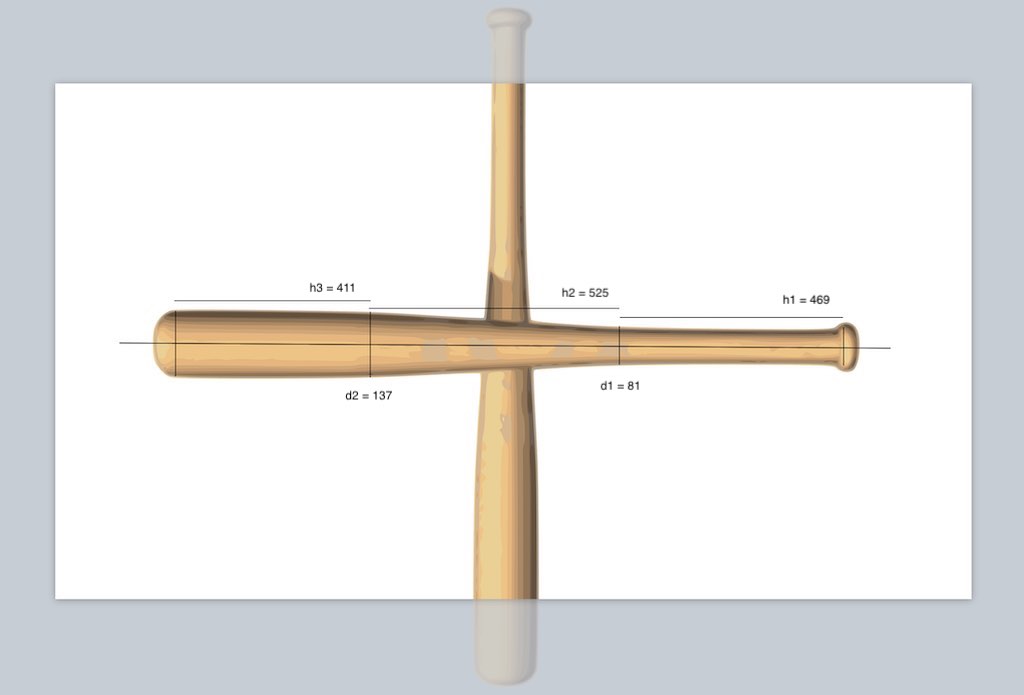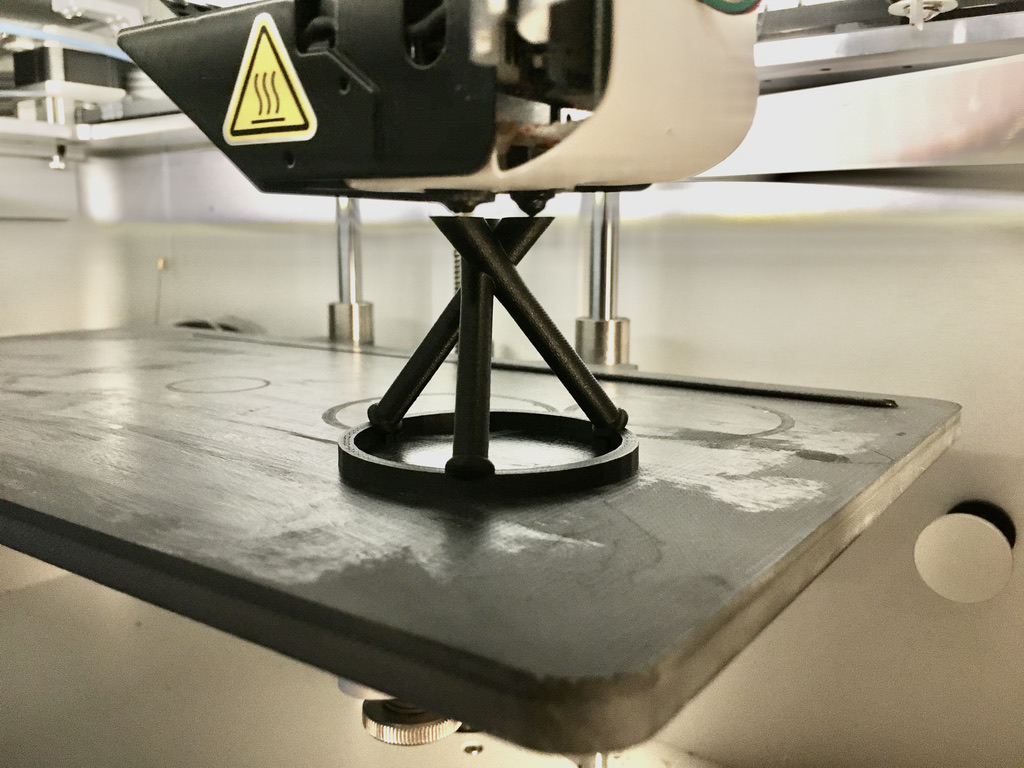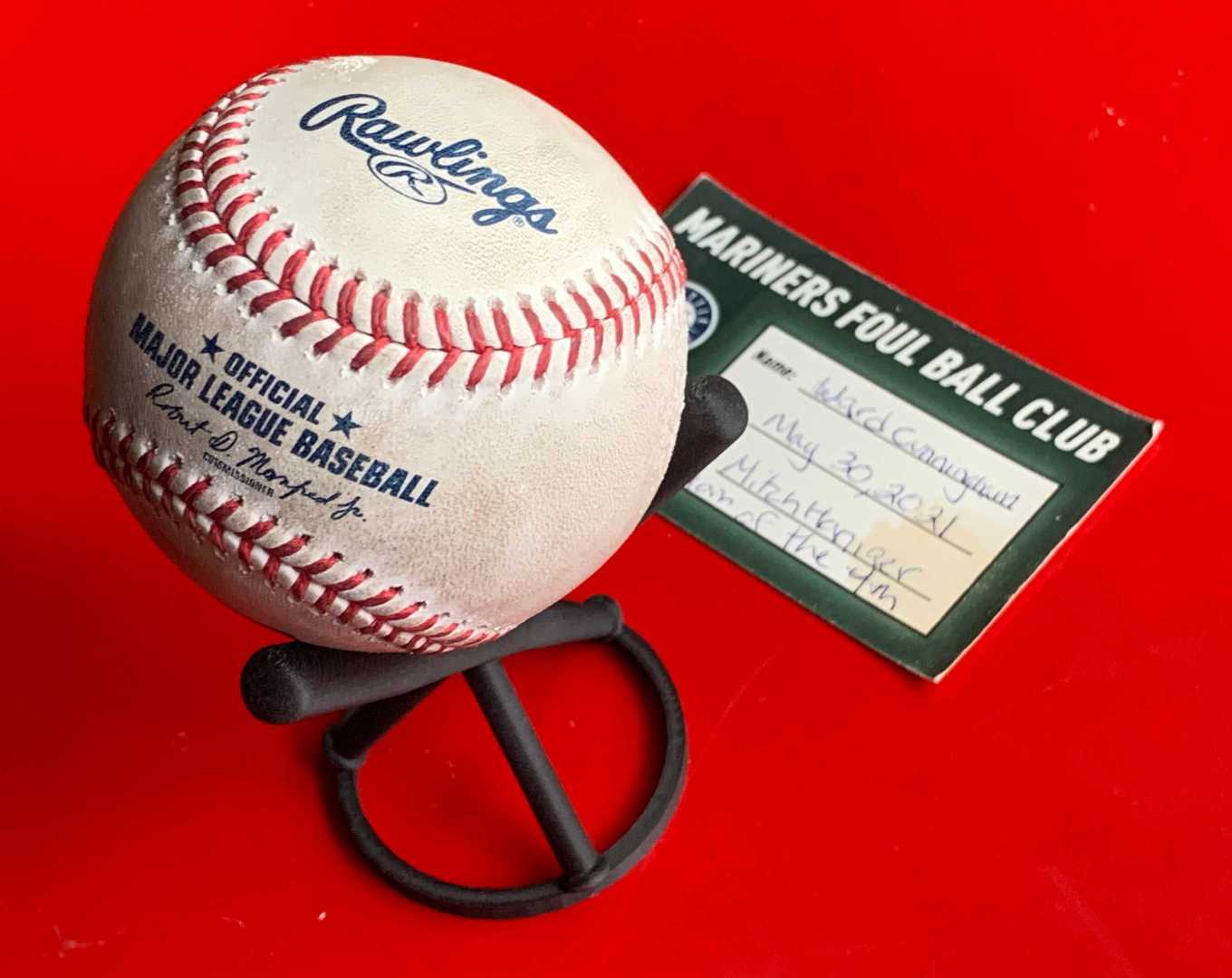Modeled stand with ball for aesthetic judgement.
I caught a fowl ball at the first baseball game I attended in the waning days of the pandemic. As a fan I should keep it forever.
See Natural Fielder
My plan was to print a tripod made from little baseball bats. I simplified in order to print with the remaining aging fiber before I loaded a fresh roll. I thinned out the "bats" until I could print two tries before I ran out.
Under the current rules, a major league baseball weighs between 5 and 51⁄4 ounces (142 and 149 g), and is 9 to 91⁄4 inches (229–235 mm) in circumference ( 27⁄8–3 in or 73–76 mm in diameter). wikipedia ![]()
$fn=36; module base() { difference() { cylinder(h=2,d=28); translate([0,0,-1]) cylinder(h=4,d=25); } } module bat(a) { rotate(a) translate([13.2,0,0]) rotate([0,-40,4]) cylinder(50,d=2); } module stand() { base(); bat(0); bat(120); bat(240); } scale(2) difference() { stand(); translate([0,0,-2]) cube([30,30,4],true); } translate([0,0,92]) color("#dde") sphere(d=75);
//scad.fed.wiki/assets/viewstl/viewstl.html?stl=http://scad.fed.wiki/assets/pages/fowl-ball-stand/stand.stl HEIGHT 370
To complete the design I found a reasonably idealized image, positioned it in Keynote, and annotated it with construction lines for important heights and diameters which the app quoted in pixels. source ![]() expand
expand ![]()

module cap(s,d) { scale(s) sphere(d=d); } module bat(l) { h1 = 469; h2 = 525; h3 = 411; d1 = 81; d2 = 137; scale(l/(h1+h2+h3)) { translate([0,0,0]) cylinder(h=h1, d=d1); translate([0,0,h1]) cylinder(h=h2, d1=d1, d2=d2); translate([0,0,h1+h2]) cylinder(h=h3, d=d2); translate([0,0,0]) cap([1.4,1.4,0.7],d1); translate([0,0,h1+h2+h3]) cap([1,1,0.7],d2); } }

Final Print in Progress

Foul Ball. May 30, 2021. Mitch Haniger. Bottom of the 4th.